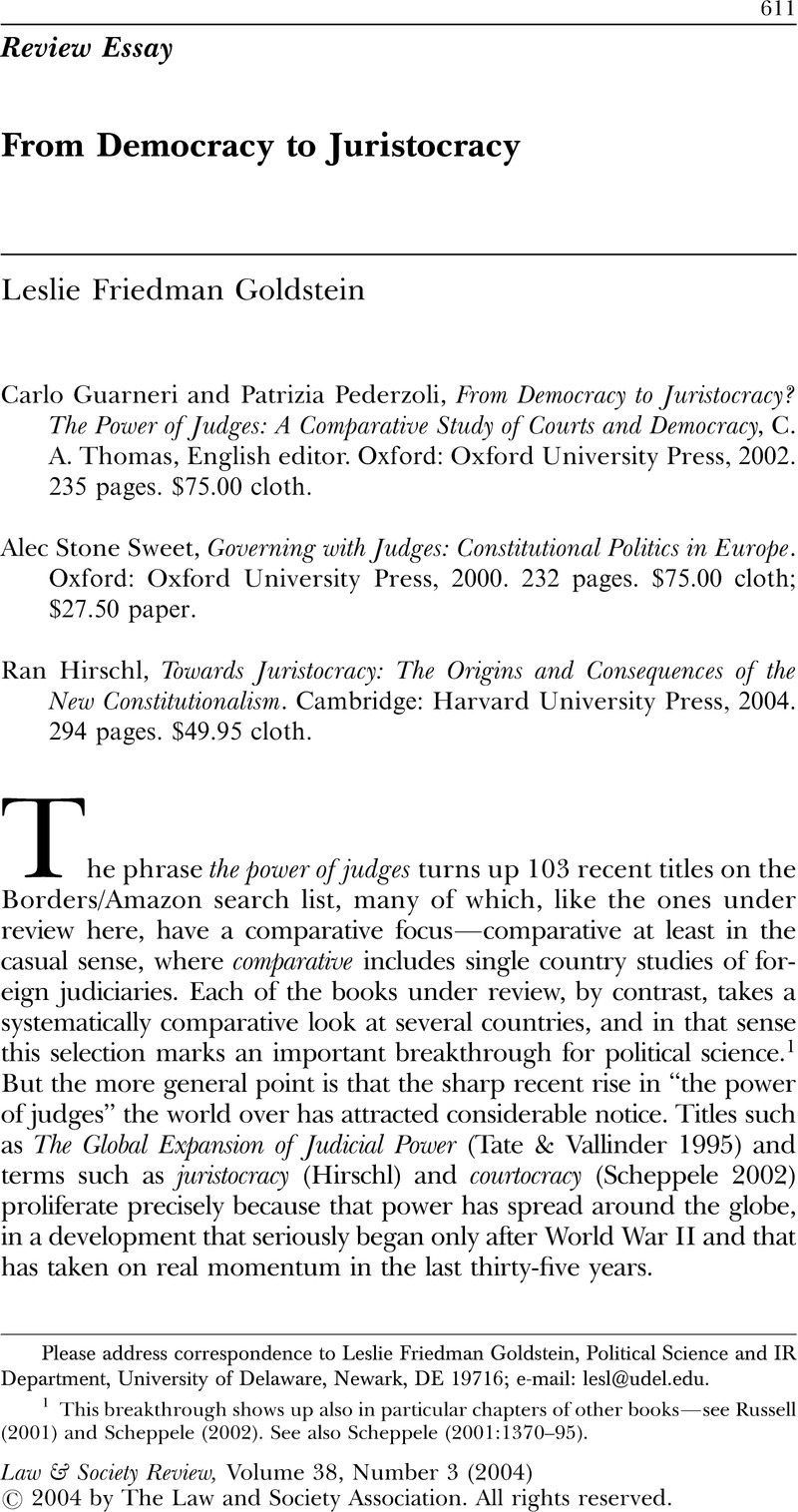Crossref Citations
This article has been cited by the following publications. This list is generated based on data provided by Crossref.
Kelemen, R. Daniel
and
Sibbitt, Eric C.
2005.
Lex Americana? A Response to Levi-Faur.
International Organization,
Vol. 59,
Issue. 02,
Hershkoff, Helen
2008.
Courting Social Justice.
p.
268.
Shankar, Shylashri
and
Mehta, Pratap Bhanu
2008.
Courting Social Justice.
p.
146.
Hershkoff, Helen
2009.
Public Law Litigation: Lessons and Questions.
Human Rights Review,
Vol. 10,
Issue. 2,
p.
157.
Lemieux, Scott E.
and
Watkins, David J.
2009.
Beyond the “Countermajoritarian Difficulty”: Lessons From Contemporary Democratic Theory.
Polity,
Vol. 41,
Issue. 1,
p.
30.
Friedman Goldstein, Leslie
2011.
Judicial Review and Racial Minorities: The U.S. Case.
SSRN Electronic Journal,
Allison, Christine Rothmayr
2015.
Behind a Veil of Ignorance?.
Vol. 32,
Issue. ,
p.
35.
Arrington, Celeste L.
and
Goedde, Patricia
2021.
Rights Claiming in South Korea.



